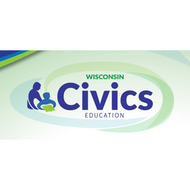
(View Complete Item Description)
This lesson builds student understanding of the relationships between the United States’ founding documents by comparing and contrasting the Declaration of Independence, the U.S. Constitution, and the Bill of Rights. Using a close reading guide, students will explore the key concepts in Jeffrey Rosen and David Rubenstein’s “Constituting Liberty: From the Declaration to the Bill of Rights,” accessible on the Interactive Constitution at constitutioncenter.org/interactive-constitution.
Your students can more fully explore the U.S. Constitution’s history and what it means today with the new Interactive Constitution, where scholars of different perspectives discuss what they agree upon, and what they disagree about. These experts were selected with the guidance of leaders of two prominent constitutional law organizations—The American Constitution Society and The Federalist Society. This project is sponsored by a generous grant from the John Templeton Foundation.
Please note that the link in the lesson plan for “Constituting Liberty: From the Declaration to the Bill of Rights” is rather difficult to locate, but is available here: https://constitutioncenter.org/media/files/13_Exhibition_Pamphlet.pdf.
Material Type:
Lesson Plan
Author:
National Constitution Center




















